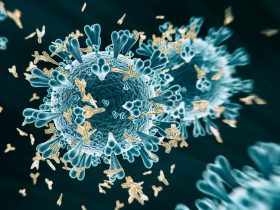More than a quarter of the human population suffers from helminth infections (1, 2). These large multicellular parasites manage to survive within their hosts by actively downmodulating the immune response that is directed towards themselves (3, 4). Thereby helminth-induced immunomodulation is not restricted to anti-helminth immunity but “spills over” to unrelated antigens. Accordingly, the immune response of a helminth-infected individual to co-infecting pathogens or to a vaccination may be compromised. Several human studies suggest that an underlying helminth infection interfere with vaccination efficacy (5–9). While most studies demonstrate reduced cellular and humoral vaccination responses in the helminth-infected population compared to an uninfected endemic control group, the efficacy of vaccination in terms of vaccination-induced protection from a challenge infection is difficult to test in human studies.
We investigate the impact of concurrent helminth infection on the outcome of vaccination in the controlled setting of the mouse system using Litomosoides sigmodontis as an established model for human filarial infections (10–12). L. sigmodontis is a natural parasite of cotton rats (Sigmodon hispidus) that successfully infects several laboratory mouse strains (11, 12). Infective 3rd stage larvae (L3) are transmitted via the blood meal by the intermediate host, the mite Ornithonyssus bacoti, to the definitive host. The transmitted L3 migrate via the lymphatics to the thoracic cavity by day 4 post infection (p.i.) and moult via a 4th larval stage (L4) to parasitic adults by day 30. Semi-susceptible C57BL/6 mice eliminate these worms via granuloma formation from day 35 onwards before sexual maturity is reached, while fully susceptible BALB/c mice stay infected for more than 3 months and allow reproduction and production of 1st stage larvae or microfilariae (10, 13, 14).
Using this model, we showed previously that an underlying L. sigmodontis infection reduced the efficacy of a CD8+ T cell inducing protein-based malaria vaccination, causing impaired protection against a Plasmodium berghei sporozoite challenge infection in vaccinated L. sigmodontis-infected mice compared to non-helminth-infected mice (15). Likewise, the proliferation of model-antigen-specific CD4+ T cells and the antibody (Ab) response to thymus-dependent antigens that require the activation of follicular T helper cells (TFH) were suppressed in infected mice compared to non-helminth-infected mice (16–18). Of note, this suppression was observed in L. sigmodontis-infected fully susceptible BALB/c mice and in semi-susceptible C57BL/6 mice to the same extent (15–18).








Leave a Reply